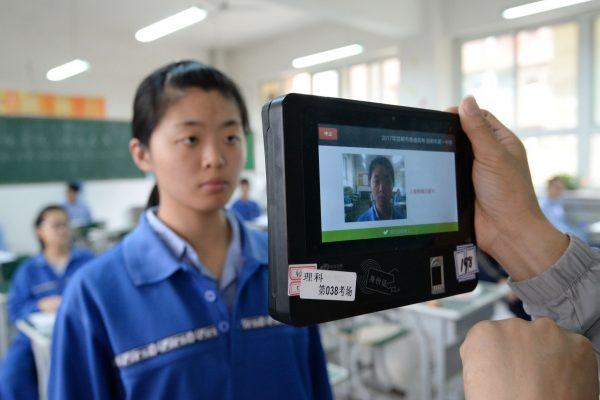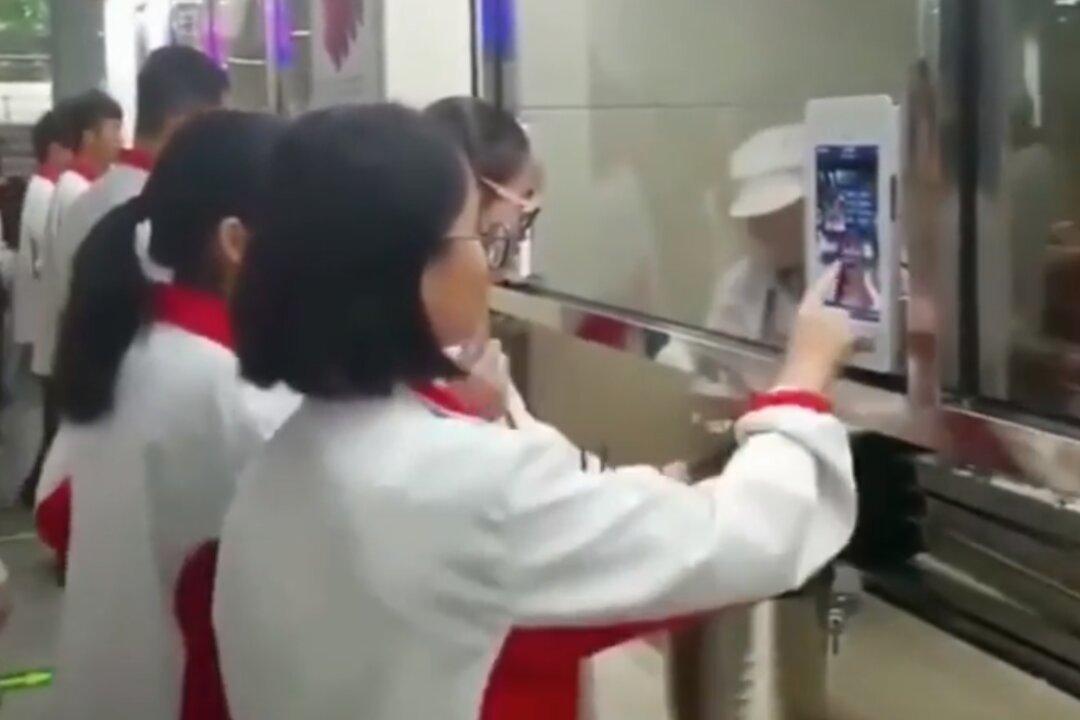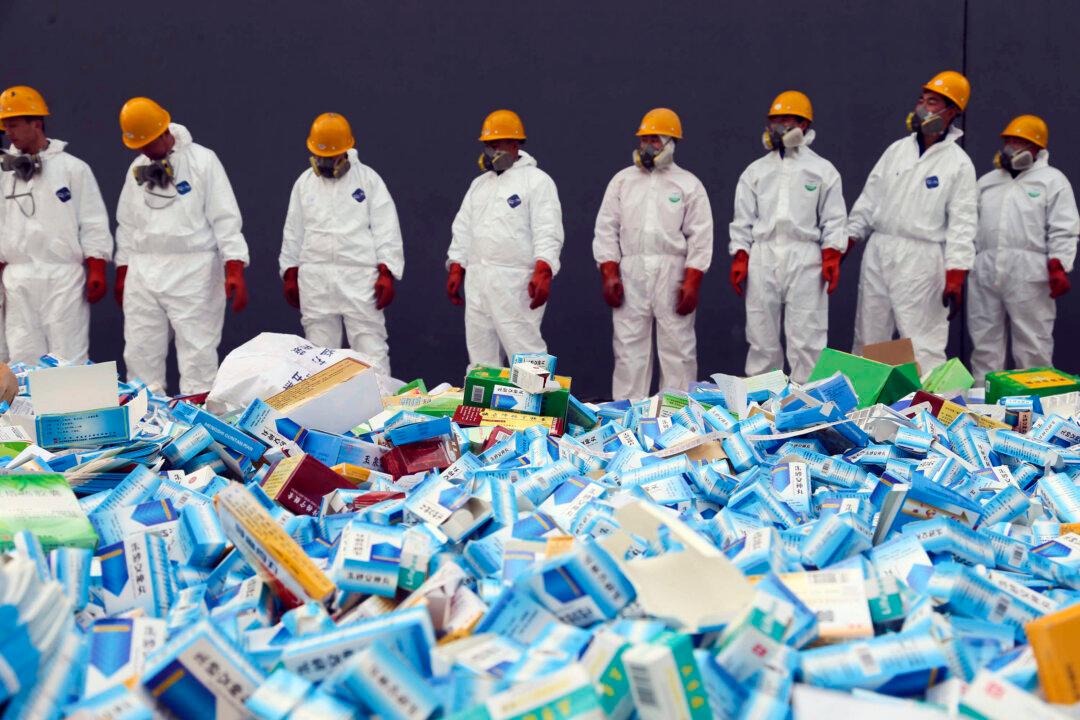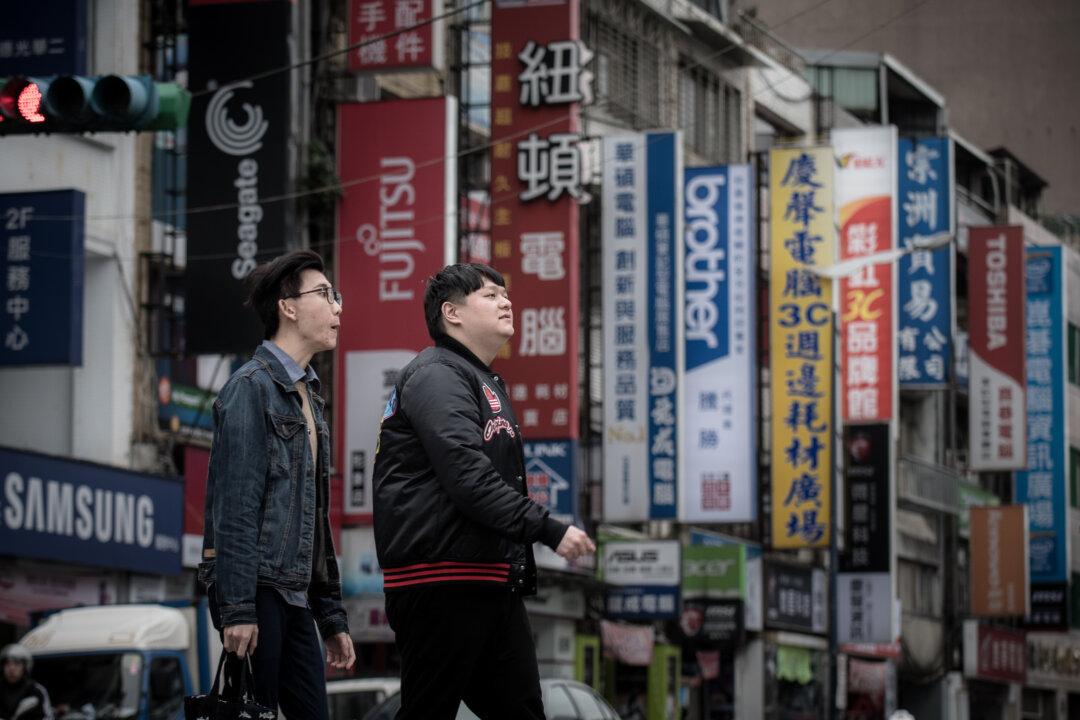In China, “big brother” has been invited to lunch. A high school has set up a comprehensive facial recognition system in its cafeteria that requires students to have their faces scanned in order to be served food.
The system, which Chinese state media are hailing as an innovative success, provides an example of how the Chinese regime is introducing facial recognition technology throughout society, with the goal of one day monitoring all Chinese citizens—an ambition the regime has never kept secret.
The use of the technology at Hangzhou No. 11 High School in Zhejiang Province is said by officials to be a response to more modest concerns. They say it is motivated by the apparently growing problem of pupils forgetting to bring their lunch coupons, according to numerous media reports.
Provided by a Chinese commercial company, the Smart Dining Hall 3.0 system equips all of the lunch counters in the cafeteria with cameras. Students lining up to get food must have their faces scanned to be checked against the existing database, a process that “takes only one second” to complete.
The system stores the ID numbers of all the students together with photos taken when they first enrolled at the school. According to the school, students were advised to take “multiple shots” to ensure that different facial expressions and angles could be captured by the system.
The system records not just the faces of the students, but also their account balance and the history of meals ordered. The school can even send a report of a student’s dining and nutrition intake to his or her parents every week, an upgrade from the previous version 2.0 system, which sent reports once per month.
No Consent
Facial recognition technology is being introduced rapidly across different sectors in China, but the decision to impose this system on people’s everyday lives is rarely if ever decided by the people. In the case of Hangzhou No. 11 High School, none of the Chinese state media reports mention whether any of the parents or pupils have consented to such a system being installed in the school.
It is unknown when the system will be completed, according to the report, as the current technical limits of facial recognition technology and the large population base mean that the system will take considerable time to build and optimize.
Meanwhile, lunchtime at Hangzhou No. 11 High School shows the Chinese regime laying the groundwork for monitoring everyone, an intention that the Chinese regime has never been kept secret.




